Where to Eat and Drink in Milan in 2024
By Bartolomeo Sala and Lorenzo VillaThere are few places as divisive as Milan. The Italian capital of design and fashion, and increasingly of anything perceived as remotely “cool” or “innovative”, has a tendency to split opinions: On the one hand, there are those converted to its cult, be they recently-arrived new adepts or old yuppies inured to its unrelenting pace and jam-packed social life and cultural agenda; on the other, there are the few heretics who, now that the weather has improved and it’s no longer as grey and foggy, won’t fail to mention the hubris of its people, the ceaseless churning out of fads, the rampant gentrification.
To be fair, there has always been a sort of perceived chasm between the city and the rest of Italy. At the height of its industrial and political might in the 1980s, the phrase “capitale morale” (moral capital) was thrown around a lot, as if its mission has always been to instruct and lead the rest of the country. (Never mind that the city was also the epicentre of the corruption scandal known as “mani pulite” which soon after would bring down the whole of the Italian political class). Things, however, have exacerbated since the World Expo of 2015. While the Italian economy stagnated, Milan’s own boomed – green, new districts and skyscrapers designed by starchitects popped up all around the city, property prices went up, tourism sky-rocketed.
Now Milan feels like a miniature version of Paris or London. (Even London bankers disgruntled by Brexit are moving there, it seems). The net balance is difficult to assess, especially for those smaller realities close by that have been all but cannibalised by its pull. But if you are lucky enough to be part of the bubble, it’s difficult not to be taken in by the style and opulence. This is especially true of its vibrant food scene which mixes a post-Habsburgic penchant for grandeur; a traditional cuisine heavy on meat, dairy, and offal harking back to a time when economic prospects were not quite as rosy; and a taste for the new, indebted to its big immigrant communities and the city’s proud international outlook. Here’s ten recommendations that will give you a taste of its unique food scene – one like no other, at least in Italy.
Trattorias – Old & New
Trippa + Osteria alla Concorrenza
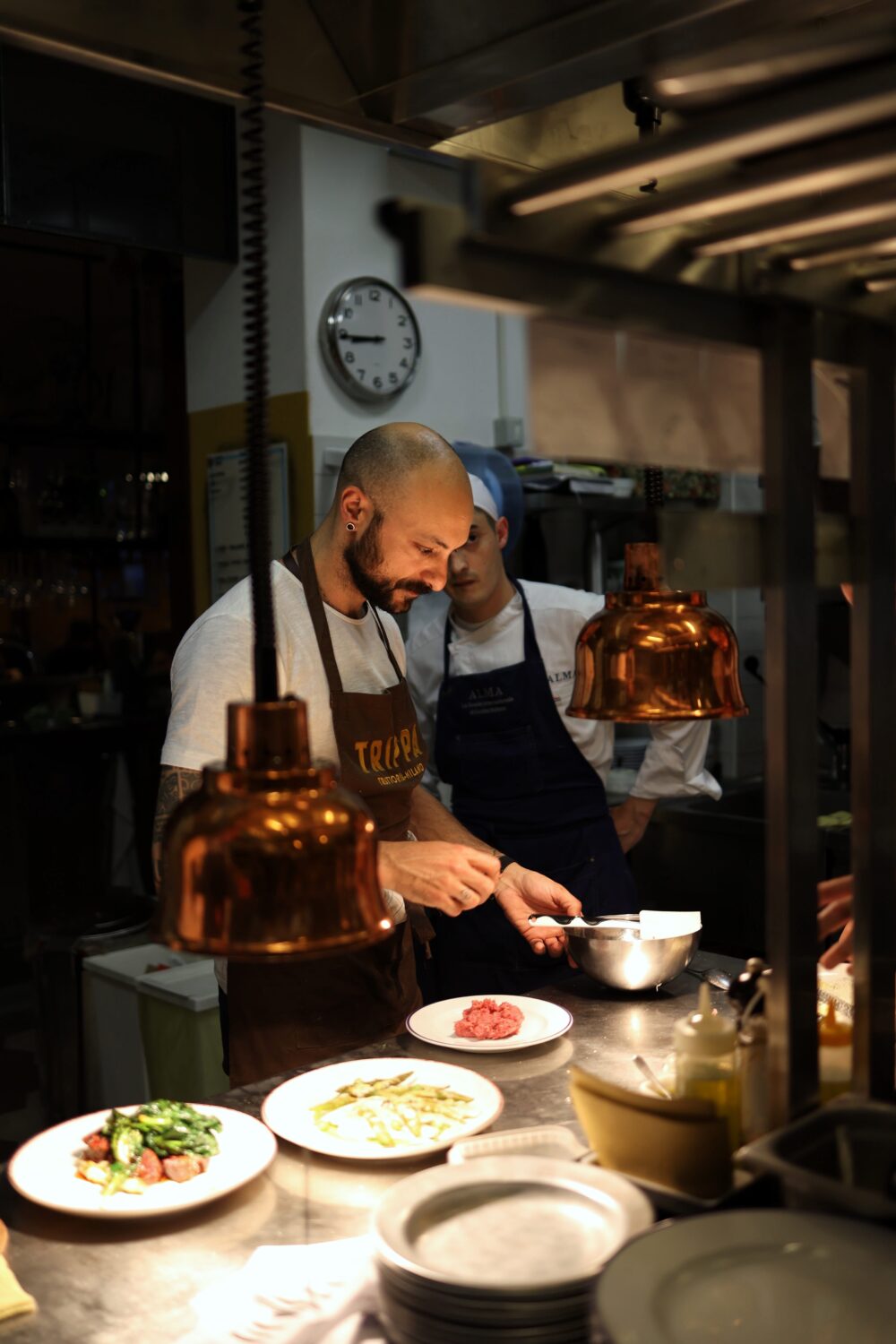
Like many other Italian cuisines, Milanese traditional food puts a special emphasis on offal. And at the moment there is no place that cooks them quite like Trippa (whose name takes its cue from busecca, or tripe cooked Milanese-style). There is a catch, though: the restaurant which puts a modern spin on other Italian unassuming classics – one of their signature dishes is an impossibly collagenic pasta al burro, butter pasta partly cooked in broth – has become the desired destination for an ever-growing population of sneaker-wearing creatives, and it is virtually impossible to find a table.
Thankfully, you can always go to the restaurant’s cave à manger. A few steps away from Porta Venezia and sporting a warm atmosphere and 19th-century décor, Osteria alla Concorrenza serves a menu of ready-made food supposed to accompany the (truly) excellent selection of natural wines. There are more accessible – even vegan – options, but absolute must-tries are nervetti – calf’s tendons and cartilages turned into a gelatin which is then cut down into little stripes and served in a tangy vinaigrette; fagioli con le codeghe (long-stewed beans with pork rinds) and (long-stewed tripe).
Favourites of mine were crostone con capofreddo – a terrine-like Tuscan cold cut made out of slow-cooked pig’s head – which I accompanied with a Barbera d’Asti, and the sbrisolona, a typical Northern Italian crumble sitting atop slightly heated-up, dense gianduja paste made by friends at Bagai Cioccolato.
Via Giorgio Vasari, 1, 20135 Milano MI, Italy
Via Melzo, 12, 20129 Milano MI, Italy
Trattoria del nuovo macello
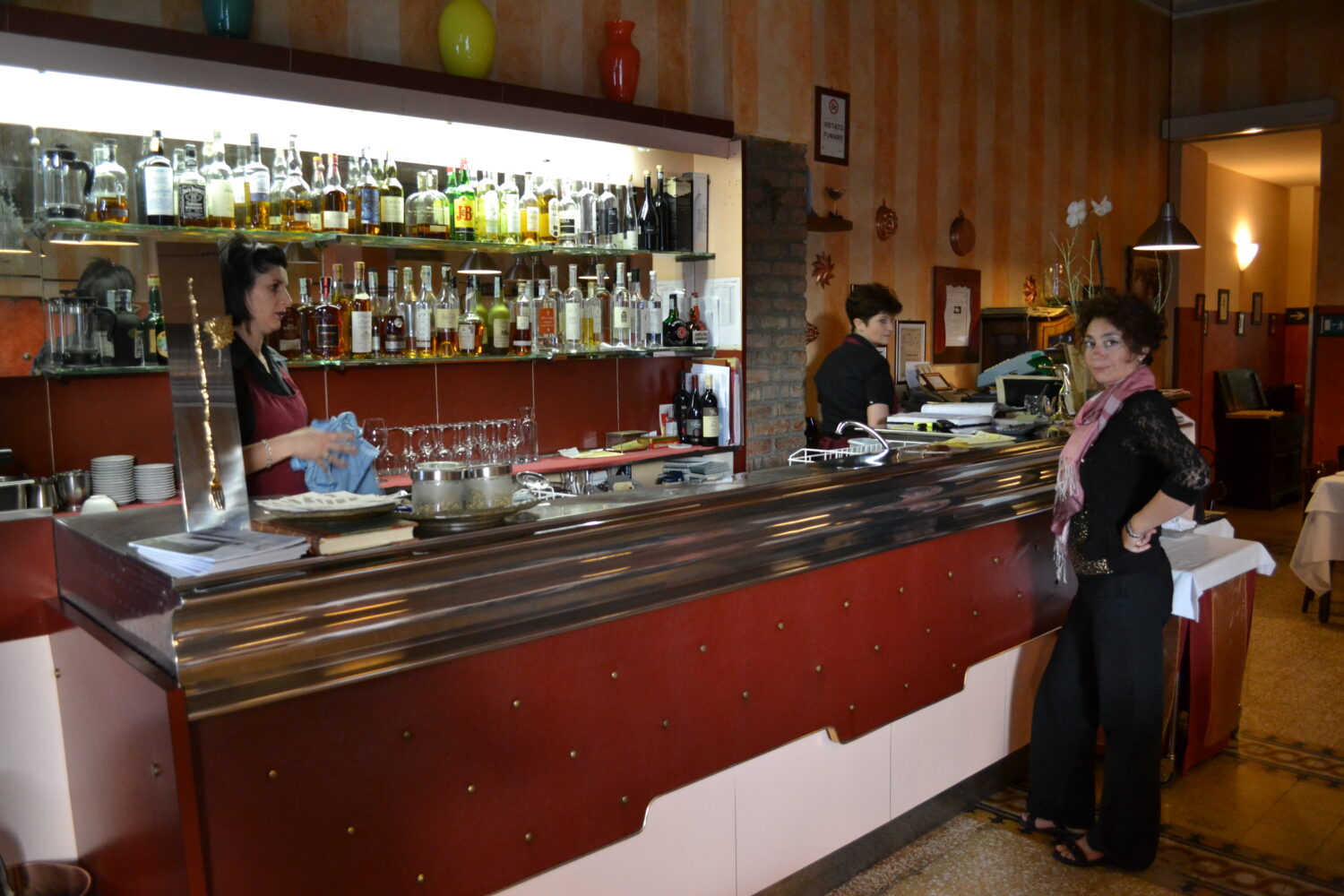
A bit off the beaten track, Trattoria del nuovo macello definitely rewards the small trek by offering a menu that riffs off Milanese tradition with flair and elegance. There are two truly iconic Milanese dishes (aside from panettone) – saffron risotto and costoletta alla Milanese – and here they simply find their highest expression. Especially the costoletta (notice the small spelling variation which translates to “small rib” instead of “cutlet”) which here is served as it is supposed to be: pink, juicy and at least two-finger thick rather than orecchio d’elefante – that is, thin, overstretched, and overall resembling an elephant’s ear (hence the name) as it was then popularised in the rest of Italy and abroad.
Via Cesare Lombroso, 20, 20137 Milano MI, Italy
Antica Trattoria della Pesa
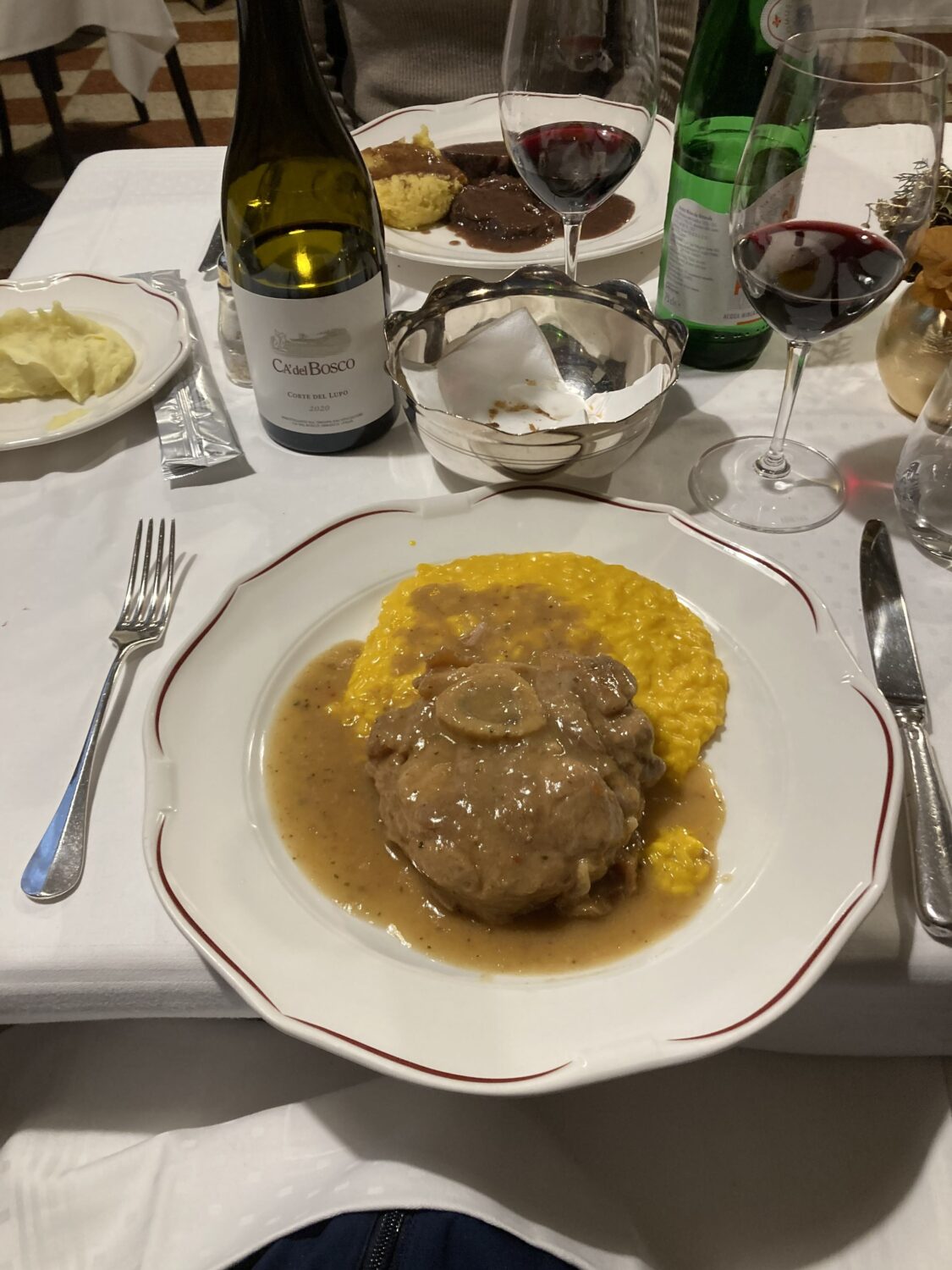
It has become a tad expensive now that it has turned into a tourist destination, but Antica Trattoria della Pesa is still one of the best places to get a glimpse of the Milan of old. Placed between Chinatown, Gae Aulenti Square, Porta Garibaldi train station, and steps away from Fondazione Feltrinelli Foundation – it stands in stark contrast with its ultramodern surroundings, which have become a symbol of “new” Milan, with its perfectly preserved décor harking back to the 1880s. Ossobuco con risotto alla milanese (saffron risotto with ossobuco), cassouela (pork offcuts and cabbage stew), and brasato con polenta (braised beef with polenta) are all sensible options, but make sure to have the foamy zabaione before you leave.
Fun fact: Ho Chi Minh lived and worked there in the 1930s.
Viale Pasubio, 10, 20154 Milano MI, Italy
Ostarie Vecjo Friul
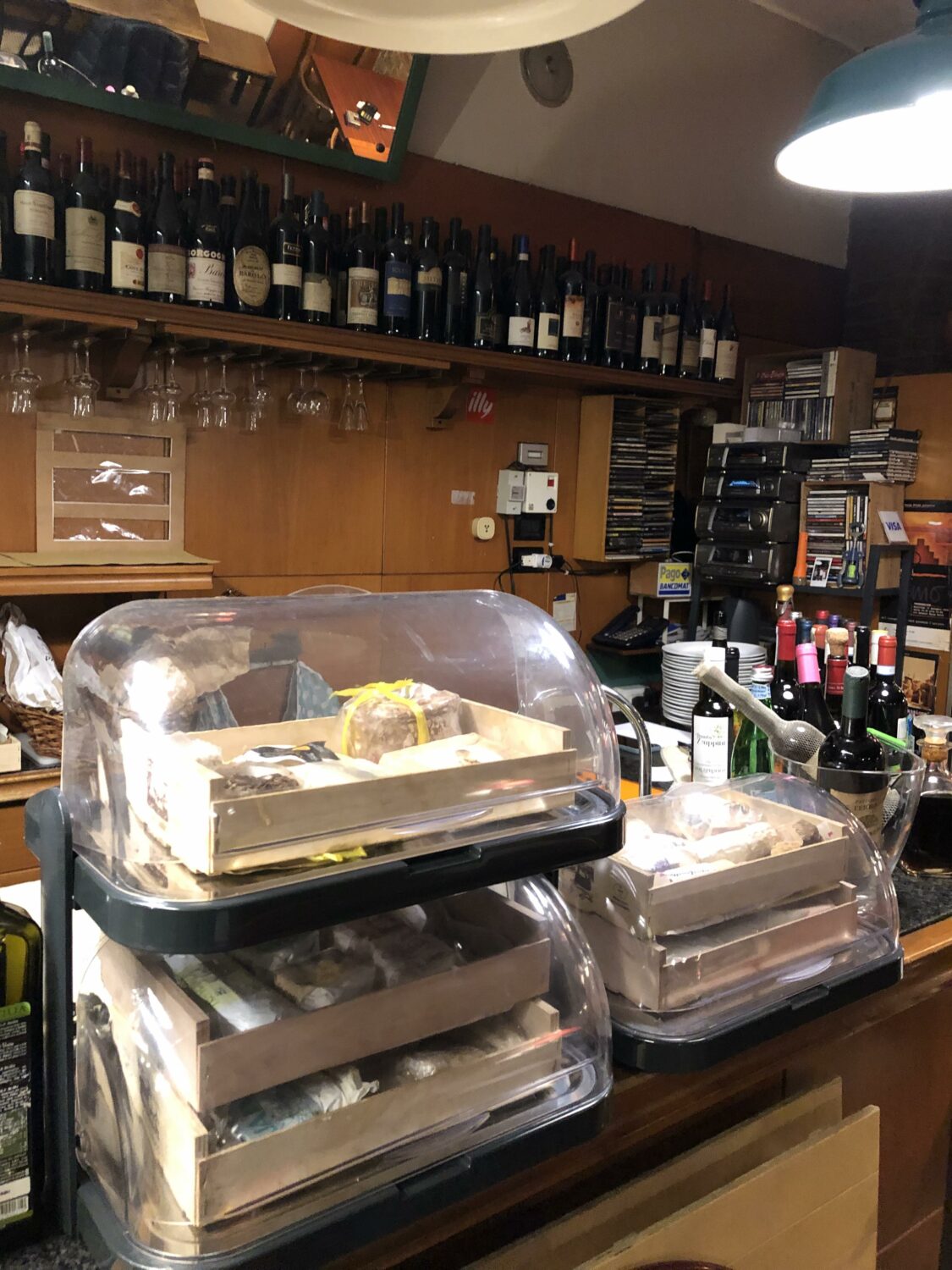
This might feel a bit of a cheat because this is better known as a hanging-out spot and (sometimes) jazz bar than a restaurant, and the food is more Friulian than Milanese, but – and this is a hill I am willing to die on – the spirit and atmosphere here are closer to that of an osteria of old than many other, more famous establishments bearing the same name. As the integrant of the Milanese haute bourgeoisie who first mentioned it to me once told me, you can skip the restaurant food and jump straight away into the legendary cold cuts and cheese board – make sure to at least try some Il Boscasso’s goat cheeses and D’Osvaldo culaccia and culatello. The wine list is uber classic (forget the orange wines), but it contains some absolute bangers.
Via Antonio Rosmini, 5, 20154 Milano MI, Italy
Japanese, Chinese, Eritrean:
Bentoteca
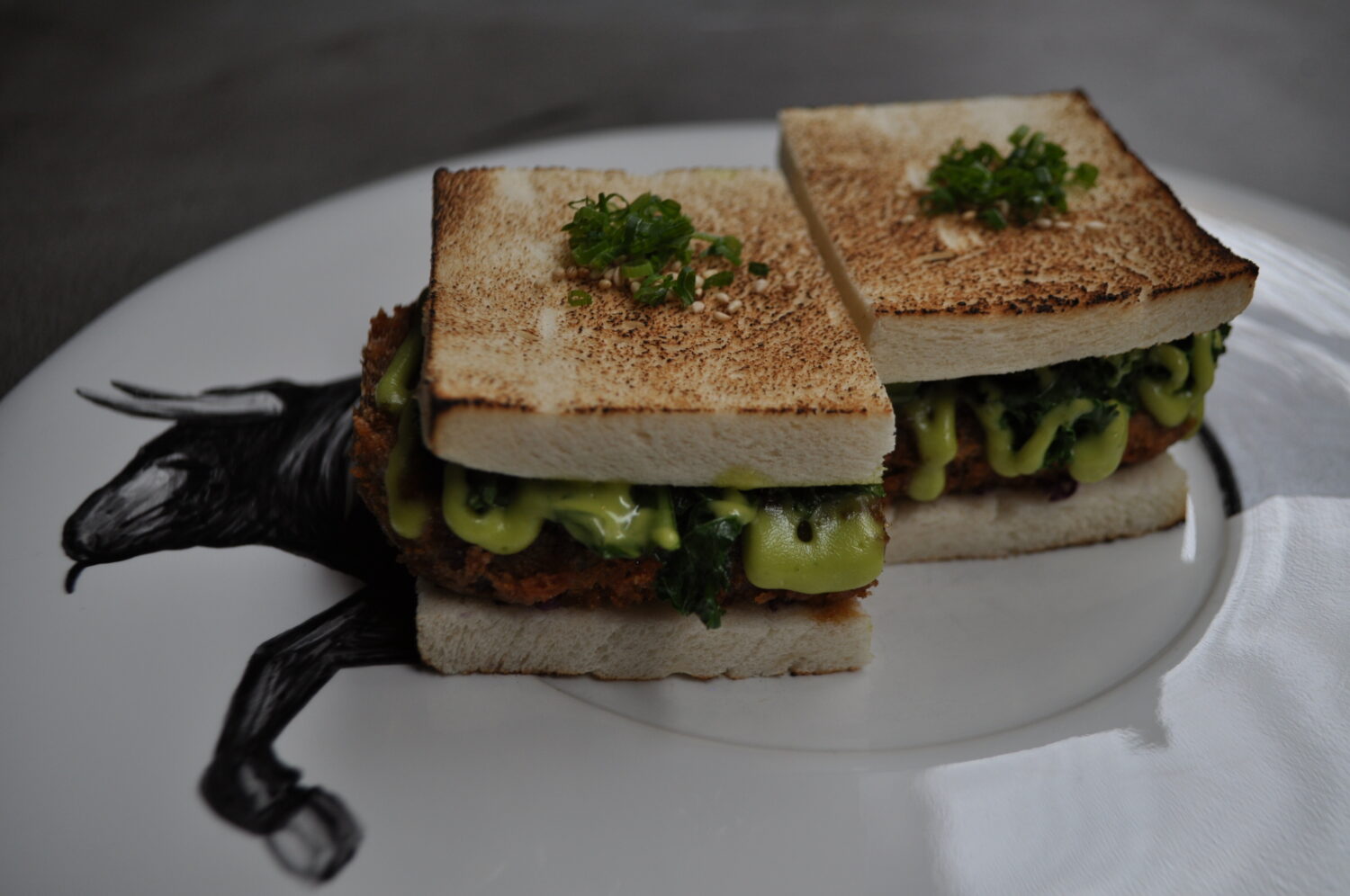
The love story between Milan and Japanese food – mostly sushi – goes as far back as the 1980s, so there are lots of options. However, if you are in for something different and current, you should check out Bentoteca, the restaurant which chef Yoji Tokuyoshi (previously a sous-chef at Massimo Bottura’s Osteria Francescana in Modena) opened near the Navigli. As the name suggests, the food riffs off the concept of bento (the Japanese packed lunch), but aside from the fast turnaround, it’s refined and well-researched in its marrying of Italian ingredients and Japanese technique, as is the natural wine and beer lists.
The fried ox tongue katsu sando, the roasted bone-marrow, and the sake-marinated pigeon are the dishes to try, but the sushi and sashimi are very good, too, of course.
Via san Calocero, 3, 20123 Milano, MI, Italy
La Ravioleria Sarpi
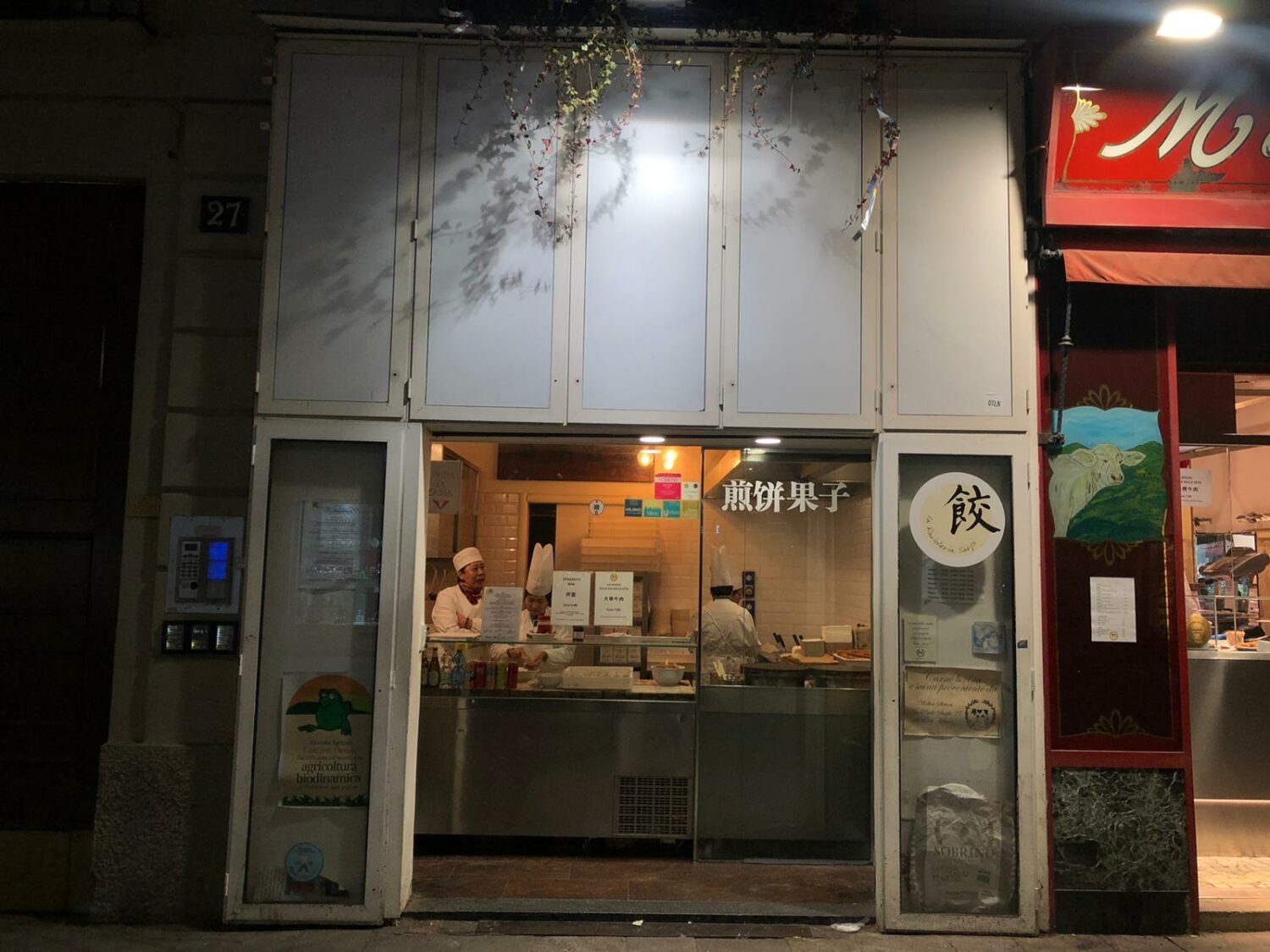
Like with Japanese food, the presence of a Chinese community in Milan goes back a long way. Chinatown, which develops along the Paolo Sarpi, is a truly striking, vibrant place – almost a city within the city, as well as one of coolest spots to hang out with scores of Chinese restaurants, bars, as well as the enoteca Cantine Isola. Serving only three kinds of shui jiao dumplings and jianbing crepes – La Ravioleria Sarpi might be the most famous spot, with queues that often stretch out from the glassed counter which allows you to take a good look at the preparation of the dumplings well into the street.
Via Paolo Sarpi, 27, 20154 Milano MI, Italy
Warsà
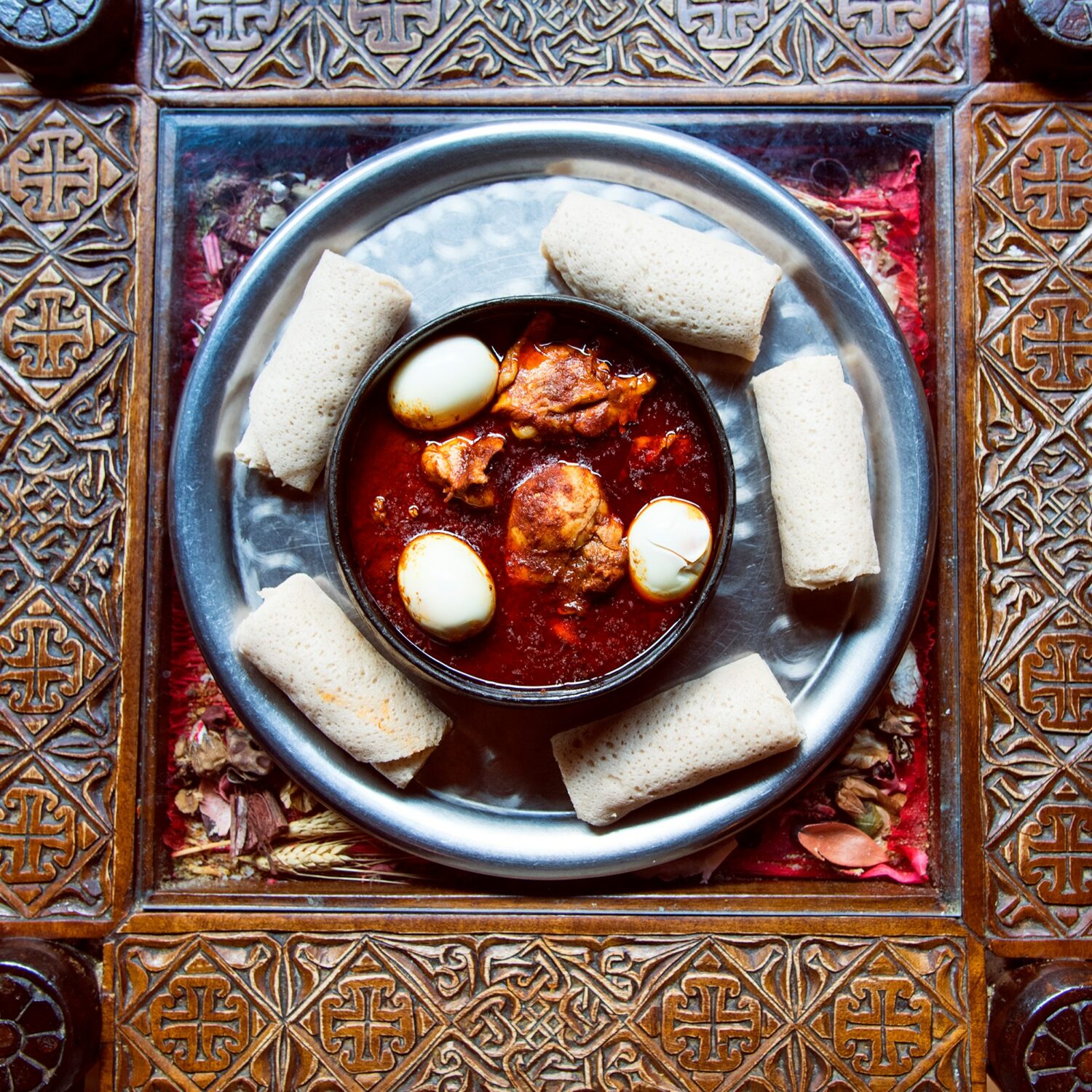
Not too far from Osteria alla Concorrenza – and in the same road as Bar Picchio, one of the spots that make up the multiethnic, LGBTQ+-friendly patchwork of Porta Venezia sits Warsà, one of the many Eritrean (as well as Ethiopian) establishments in the neighbourhood. Here the name of the game are zighinì: a single dish where different types of proteins – chicken, beef, as well as steamed vegetables for vegetarians – are served on a bed of injera made out of four different flours (wheat, corn, sorghum, and rice flower), which you are supposed to break down and use to mop up the food, scarpetta-style.
Via Melzo, 16, 20129 Milano MI, Italy
Bakeries, gastronomie, and the like:
Panificio Davide Longoni
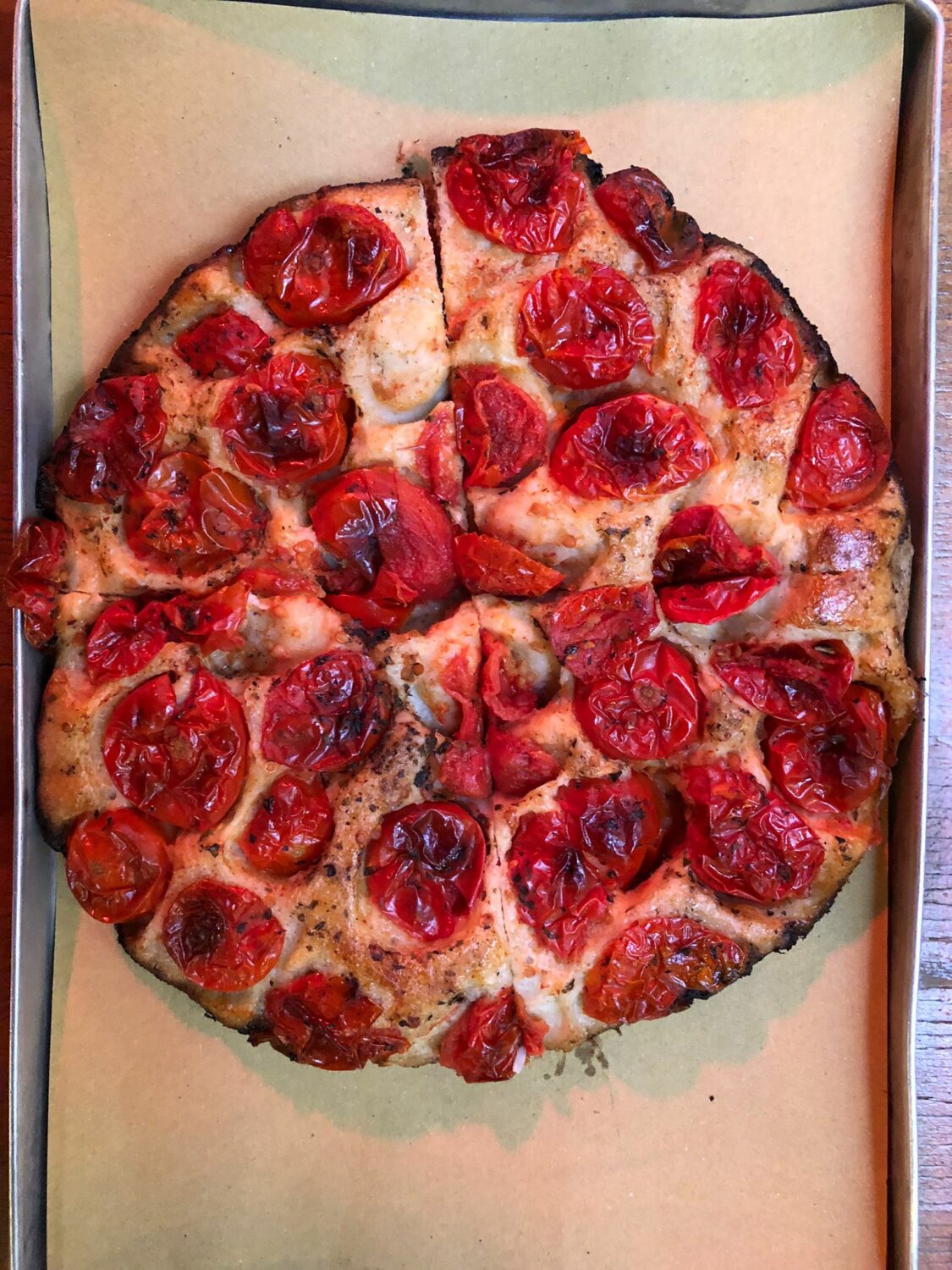
Hailed as “the father of modern bread-making” by Italy’s most important food magazine and TV channel, Longoni is a bit of a hero in the Italian food scene, the pioneer behind a much-needed return to origins marrying tradition, good labour practices, and ecological sustainability. If you have a chance – the bakery has a few spots in Porta Romana as well as one not too far from Milan’s central station – by all means try one of the fragrant sourdoughs made with stone-ground flour made from grains harvested from Longoni’s own cultivations. Otherwise, stick around for breakfast and try one of the many pastries – and don’t forget to pack a focaccia barese for a light lunch later in the day.
Via Gerolamo Tiraboschi, 19, 20135 Milano MI, Italy
Peck
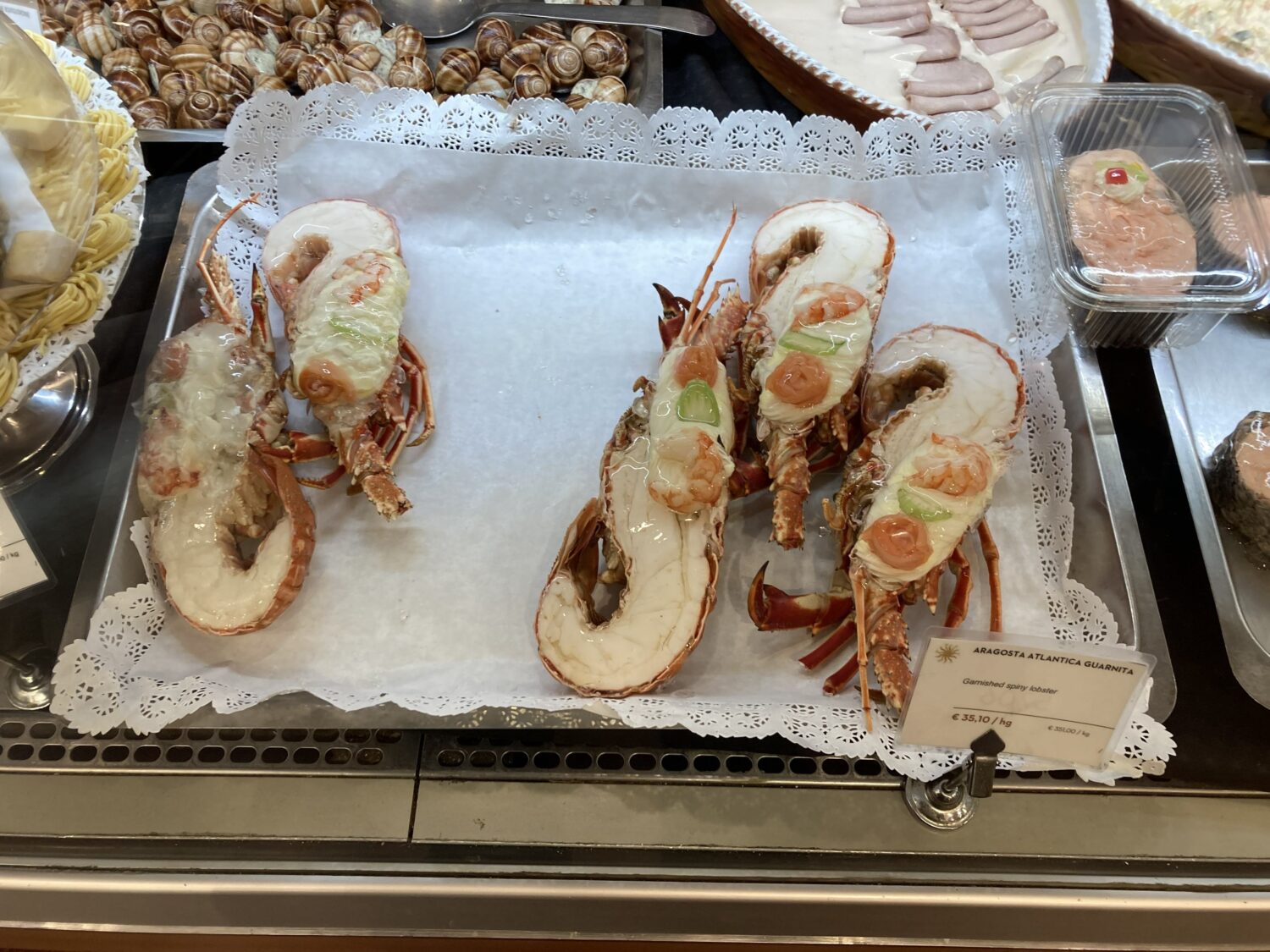
This is less a food recommendation than a touristic tip. (Somehow I find the eventuality of you taking home half a lobster garnished with mayonnaise and gelatine worth a few hundreds euros somewhat unlikely). However, if you are, like me, a sucker for food markets and delis displaying the best (and sometimes freakiest) produce, you must pay a visit to Peck. One of Milan’s oldest gastronomia – originally founded by a Czech emigré in the 1883 and taking up multiple floors of an old building near the Duomo – it is a triumph of opulence and displays any food imaginable, from the butcher section which showcases monstrously big Carmagnola Grey rabbits, to the bricks of Milanese patè, to its endless deli section with a cornucopia of offers.
If you go, make sure to visit downstairs where incredibly expensive bottles of super Tuscans, classic French wines, and champagnes are watched over by anxious-looking security guards.
Check out Rossi & Grassi for a more neighbourly, bottega-like option.
Via Spadari, 9, 20123 Milano MI, Italy
Bartolomeo Sala is a writer based in London. His writing has appeared in Frieze, Vittles, and The Brooklyn Rail.
Lorenzo Villa is a writer and editor based in Milan. He writes about lifestyle for Harper’s Bazaar Italia and collaborates with the literary magazine Galápagos.
Header photo by Krisztina Papp on Pexels.